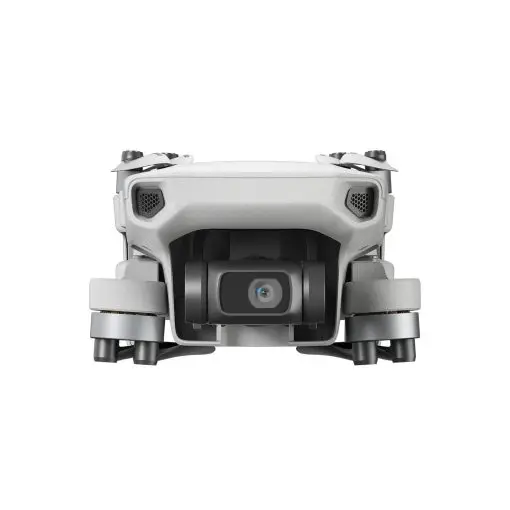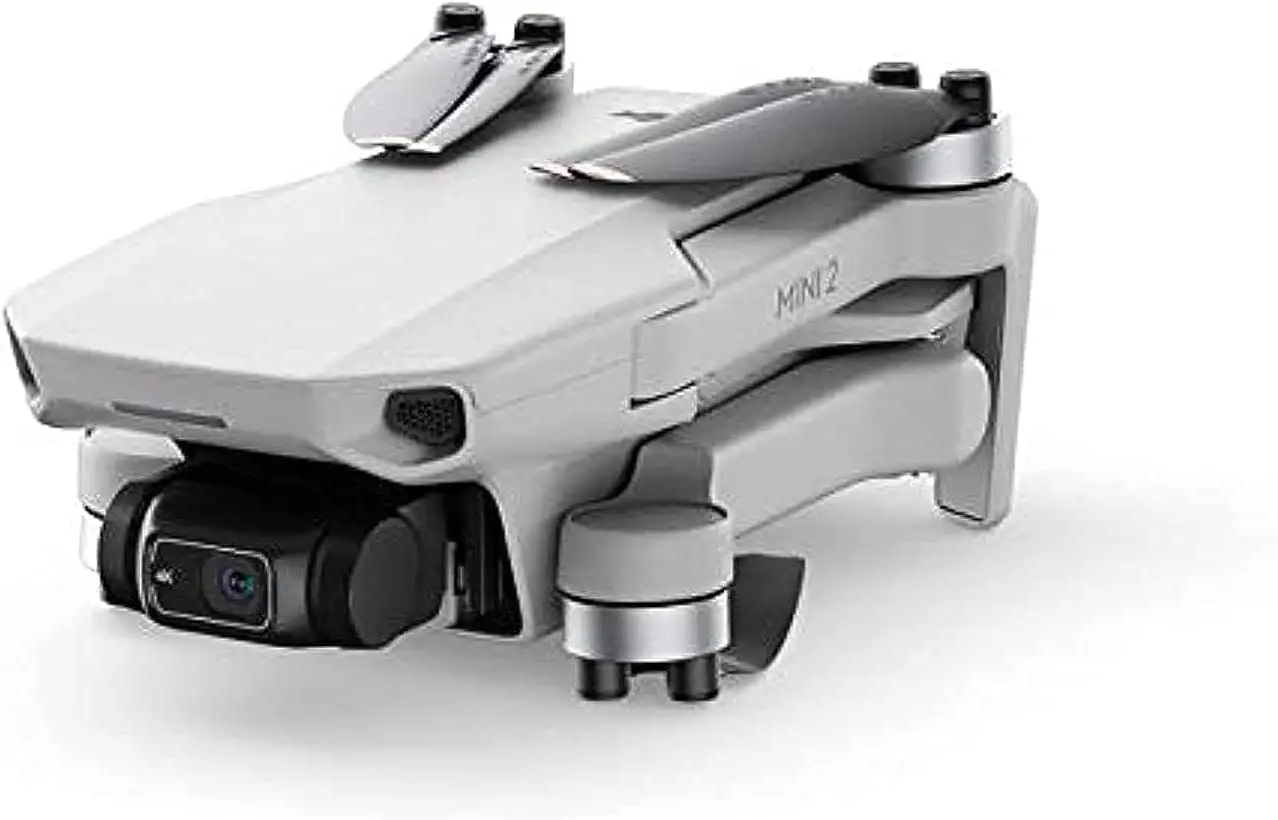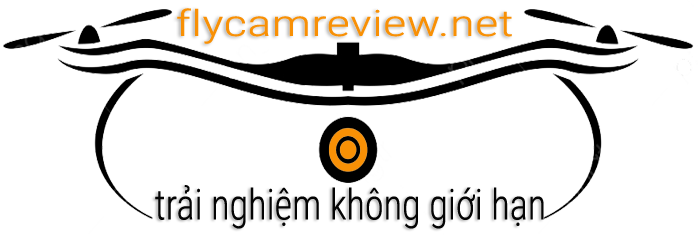As an avid drone enthusiast, I’ve had the pleasure of testing and reviewing various flycam models over the years. In this article, I’ll share my insights on the top 5 Mavic Mini 2 drones that are making waves in 2024. Whether you’re a beginner looking to explore aerial photography or a seasoned pro seeking an upgrade, these compact yet powerful drones offer impressive features and performance.
Overview of current flycam Mavic Mini 2 trends
The flycam Mavic Mini 2 series has revolutionized the drone market with its combination of portability and advanced features. In recent years, we’ve seen a significant trend towards miniaturization without compromising on camera quality or flight performance. DJI, the industry leader, has consistently pushed the boundaries of what’s possible in a sub-250-gram drone, making these devices increasingly accessible to hobbyists and professionals alike.

One notable trend is the emphasis on longer flight times and improved transmission ranges. Manufacturers are packing more efficient batteries into these tiny frames, allowing users to capture footage for extended periods without frequent landings. Additionally, enhanced video transmission technology has expanded the operational range of these drones, giving pilots more freedom to explore and capture stunning aerial shots from a distance.
Advancements in camera technology
The camera capabilities of Mavic Mini 2 drones have seen remarkable improvements. What started as basic 2.7K video recording has now evolved into 4K HDR capabilities in some models. This leap in image quality allows even amateur pilots to capture professional-grade footage. The integration of advanced stabilization systems, such as 3-axis gimbals, has also become standard, ensuring smooth and steady shots even in challenging weather conditions.
Smart features for enhanced usability
Another trend worth noting is the incorporation of intelligent flight modes and smart features. QuickShots, automated return-to-home functions, and obstacle avoidance systems have made these drones more user-friendly and safer to operate. These features not only assist beginners in capturing cinematic shots but also provide experienced users with creative tools to enhance their aerial videography.

Regulatory compliance and portability
With drone regulations becoming increasingly stringent worldwide, the sub-250-gram weight class of the Mavic Mini 2 series has gained significant popularity. These drones often fall below the weight threshold for registration in many countries, making them an attractive option for travelers and casual users. The focus on compact, foldable designs has also made these drones incredibly portable, allowing enthusiasts to take their aerial photography gear on adventures without added bulk.
Importance of choosing the right flycam Mavic Mini 2
Selecting the ideal flycam Mavic Mini 2 is crucial for ensuring you get the most out of your aerial photography and videography experiences. As someone who has spent countless hours piloting these remarkable machines, I can attest to the significance of making an informed decision. Let’s explore the key factors to consider when looking for the perfect Mavic Mini 2 drone.
Camera quality and stabilization
The primary purpose of a flycam Mavic Mini 2 is to capture stunning aerial footage. Therefore, the camera quality should be at the top of your priority list. Look for models that offer at least 2.7K video resolution, with 4K being the gold standard for professional-grade results. Equally important is the stabilization system – a 3-axis gimbal is essential for smooth, jitter-free footage, especially when flying in windy conditions.
Why it matters: Higher resolution and better stabilization translate to crisper, more professional-looking videos and photos. This is particularly important if you plan to use your footage for anything beyond casual social media sharing.

Flight time and battery life
One of the most frustrating aspects of drone piloting is having to cut a flight short due to low battery. When choosing a flycam Mavic Mini 2, pay close attention to the advertised flight time. Look for models that offer at least 30 minutes of flight time per battery charge. Some advanced models now boast flight times of up to 45 minutes, which can make a significant difference in your shooting capabilities.
Why it matters: Longer flight times mean more opportunities to capture the perfect shot without interruption. It also reduces the need for frequent battery changes, which can be particularly beneficial when shooting in remote locations.

Transmission range and signal quality
The transmission range of your flycam Mavic Mini 2 determines how far you can fly while maintaining a stable connection with your controller. A longer range not only gives you more freedom to explore but also ensures a clearer video feed for precise framing of your shots. Look for drones that offer at least 8-10 km of transmission range for optimal performance.
Why it matters: A robust transmission system allows you to capture shots from unique vantage points and ensures you don’t lose control of your drone due to signal interference or distance limitations.

Intelligent flight modes and ease of use
Even if you’re an experienced pilot, intelligent flight modes can significantly enhance your creative capabilities. Features like QuickShots, ActiveTrack, and automated return-to-home functions make it easier to capture complex shots and ensure the safety of your drone. When selecting a flycam Mavic Mini 2, consider models that offer a range of smart features to assist your piloting and cinematography.
Why it matters: These features not only make flying more enjoyable but also allow you to focus on composition and creativity rather than the technicalities of drone control. For beginners, they provide a safety net and a way to capture professional-looking footage with minimal experience.

Portability and weight
One of the key advantages of the Mavic Mini 2 series is its portability. When choosing your drone, consider how easily it can be packed and transported. Look for foldable designs and compact carrying cases. Additionally, pay attention to the weight – drones under 250 grams often have fewer regulatory restrictions, making them ideal for travel and casual use.
Why it matters: A truly portable flycam Mavic Mini 2 is one you’ll be more likely to take with you on adventures, increasing the opportunities for capturing unique aerial perspectives. The lightweight design also makes these drones more accessible to a wider range of users, including those who might be intimidated by larger, more complex systems.
5 Best Flycam Mavic Mini 2 Options for 2024 Soaring to New Heights
Top Picks Table
| Product Name | Price | Buy Now |
|---|---|---|
| DJI Mavic Mini Combo | $285.00 | Buy Now |
| DJI Mini 2 SE Fly More Combo | $429.00 | Buy Now |
| RotorLogic DJI Mini 2 Aircraft Only | $286.99 | Buy Now |
| DJI Mini 4 Pro Fly More Combo Plus | $1,159.00 | Buy Now |
| Original DJI Mavic Mini 2 Two-Way Charging Hub and Batteries | $138.00 | Buy Now |
1. DJI Mavic Mini Combo

As I unboxed the DJI Mavic Mini Combo, I was immediately struck by its compact size and lightweight design. Weighing in at just under 0.55lbs, this little powerhouse fits comfortably in the palm of my hand. Despite its diminutive stature, the Mavic Mini packs a serious punch when it comes to performance and features.
Taking it out for its maiden flight, I was impressed by how stable and responsive the drone felt in the air. The 3-axis gimbal did an excellent job of keeping the camera steady, even in light winds. Speaking of the camera, the 2.7K video quality is crisp and detailed, perfect for capturing stunning aerial shots for social media or personal projects.
One of the standout features of the Mavic Mini is its impressive 30-minute flight time. This allowed me to explore and capture footage without constantly worrying about battery life. The GPS-assisted hover was particularly useful, keeping the drone steady when I wanted to focus on framing the perfect shot.
The included controller feels solid and ergonomic, with intuitive controls that made piloting the drone a breeze. I appreciated the real-time video transmission, which gave me a clear view of what the drone was seeing, even at considerable distances.
While the Mavic Mini may lack some of the advanced features found in higher-end models, its simplicity is part of its charm. It’s an excellent entry point for those new to drone photography and videography, offering a balance of quality and ease of use that’s hard to beat at this price point.
| Pros | Cons |
|---|---|
| Ultra-lightweight and portable | No obstacle avoidance system |
| 30-minute flight time | 2.7K video (not 4K) |
| Stable 3-axis gimbal | Limited wind resistance |
| Easy to fly for beginners | No RAW photo capability |
| GPS-assisted hover | No ActiveTrack or advanced flight modes |
2. DJI Mini 2 SE Fly More Combo

The DJI Mini 2 SE Fly More Combo is a significant step up from its predecessor, and I was eager to put it through its paces. Right out of the box, I was impressed by the comprehensive package, which includes three batteries, providing an impressive total flight time of up to 93 minutes.
Taking to the skies, the first thing I noticed was the incredible 10km video transmission range. This extended range opened up new possibilities for capturing sweeping landscapes and cityscapes that were previously out of reach. The QHD video quality is a noticeable improvement, delivering sharp and vibrant footage that looks great even on larger screens.
One of the standout features of the Mini 2 SE is its enhanced wind resistance. During my test flights, it handled gusts with remarkable stability, maintaining steady footage even in challenging conditions. This improvement alone makes it a worthy upgrade for those who frequently fly in varied weather.
The QuickShots feature is a game-changer for creating professional-looking videos with minimal effort. I particularly enjoyed the Dronie and Helix modes, which allowed me to capture dynamic shots that would have been difficult to achieve manually. The auto return to home function also provided peace of mind, especially when flying at longer distances.
Despite its advanced features, the Mini 2 SE remains incredibly user-friendly. The intuitive controls and responsive flight characteristics make it an excellent choice for beginners while still offering enough depth to satisfy more experienced pilots. The compact size and sub-249g weight continue to make it an ideal travel companion, exempt from many drone regulations.
| Pros | Cons |
|---|---|
| Extended 10km video transmission | No obstacle avoidance system |
| Up to 93 minutes flight time with 3 batteries | QHD video (not 4K) |
| Improved wind resistance | No ActiveTrack feature |
| QuickShots for easy cinematic footage | Limited low-light performance |
| Under 249g for easier regulation compliance | No adjustable aperture |
3. RotorLogic DJI Mini 2 Aircraft Only

When I first got my hands on the RotorLogic DJI Mini 2 Aircraft Only, I was intrigued by the concept of a replacement unit for those who might have lost or damaged their original drone. As someone who’s experienced the heartbreak of a crash, I could definitely see the appeal of this option.
Upon inspection, I found the build quality to be on par with the original DJI product. The compact and lightweight design remains true to the Mini 2’s reputation for portability. It’s worth noting that this is just the aircraft itself – you’ll need to have your own controller, batteries, and other accessories to get it airborne.
Taking it for a test flight, I was pleased to find that it performed identically to my original Mini 2. The responsiveness and stability in the air were exactly what I’d come to expect from this model. The 4K camera continued to deliver stunning footage, with the 3-axis gimbal ensuring smooth and steady shots even during more dynamic maneuvers.
One aspect I particularly appreciated was the ease of binding this replacement unit to my existing controller. The process was straightforward and took only a few minutes, getting me back in the air with minimal downtime. This is a crucial factor for those who rely on their drone for work or have limited time for their hobby.
While the lack of included accessories might be a drawback for some, I found it to be a cost-effective solution for those who already have the necessary peripherals. It’s an excellent option for experienced pilots who want to maintain their setup without the need for a complete new package.
| Pros | Cons |
|---|---|
| Cost-effective replacement option | No included accessories |
| Identical performance to original Mini 2 | Requires existing controller and batteries |
| 4K video capability | Not suitable for first-time buyers |
| Easy to bind with existing controller | No warranty from DJI |
| Maintains original compact design | Potential compatibility issues with older accessories |
4. DJI Mini 4 Pro Fly More Combo Plus

The DJI Mini 4 Pro Fly More Combo Plus represents the pinnacle of mini drone technology, and I was thrilled to put it through its paces. From the moment I took it out of the box, it was clear that this was a premium product designed for enthusiasts and professionals alike.
The first thing that struck me was the incredible 4K HDR video capability. The footage I captured was nothing short of breathtaking, with rich colors, excellent dynamic range, and sharp details that rivaled much larger drones. The improved low-light performance was particularly impressive, allowing me to capture stunning sunset and twilight shots that were previously challenging with smaller drones.
One of the standout features is the extended flight time, with the three Intelligent Flight Battery Plus units providing up to 135 minutes of air time. This is a game-changer for longer shoots or when exploring remote locations. I found myself able to capture entire events or location scouting sessions without needing to land for a battery swap.
The inclusionof the Smart Return to Home feature also provided me with peace of mind during my flights. It’s comforting to know that if I ever get distracted or lose sight of my drone, it will automatically return to its takeoff point, reducing the risk of losing it in unfamiliar terrain.
However, the Mini 4 Pro does come at a premium price, which may not be suitable for beginners or casual users. For someone like me who is serious about aerial photography and videography, the investment is well worth it, but it’s important to consider your needs before making such a purchase. Additionally, while the drone is packed with features, mastering all of them can take some time, so new users may need patience while learning.
Overall, I found the DJI Mini 4 Pro Fly More Combo Plus to be an exceptional mini drone packed with advanced features that cater to both professionals and enthusiasts. The stunning video quality, extended flight time, and user-friendly design make it a top choice for anyone looking to elevate their aerial photography game.
| Pros | Cons |
|---|---|
| Incredible 4K HDR video capability | High price point |
| Up to 135 minutes flight time | Can be complex for beginners |
| Improved low-light performance | Requires learning curve for advanced features |
| Reliable Smart Return to Home feature | Larger size may limit portability |
| Premium build quality and design | Limited accessory compatibility |
5. Original DJI Mavic Mini 2 Two-Way Charging Hub and Two Pack Mini 2 Intelligent Flight Batteries

As someone who loves spending time flying my drone, I was excited to get my hands on the Original DJI Mavic Mini 2 Two-Way Charging Hub and additional batteries. The convenience of having more power options available cannot be overstated, especially when you’re out in the field wanting to maximize your flying time.
The charging hub itself is a sleek and compact design that fits easily into my carry bag. What really impressed me was the two-way charging feature; I could charge my batteries directly from the hub using a power bank during outdoor sessions – a fantastic option for long trips where conventional wall sockets are unavailable.
After testing the additional batteries, I found that they extend my total flight time significantly. No longer do I have to worry about cutting my sessions short due to battery constraints. This gives me the freedom to explore more locations and capture additional footage without the hassle of constantly needing to recharge.
Moreover, the process of swapping the batteries was seamless, ensuring that I spend less time on setup and more time enjoying my drone flights. The intelligent flight batteries paired excellently with my existing Mini 2 drone, providing reliable performance throughout each flight.
While there are no major drawbacks, I would have liked to see a case included for transporting the hub and batteries securely together. Otherwise, this product is a great addition for avid drone users like myself who want to enhance their flying experience.
| Pros | Cons |
|---|---|
| Two-way charging for convenience | No carrying case included |
| Extends flight time significantly | Slightly bulky compared to standard chargers |
| Easy battery swapping | Limited to Mini 2 and Mini SE compatibility |
| Compact and portable design | May require additional adapters for different power sources |
| Reliable performance with intelligent batteries | Price may be high for occasional users |
Conclusion
Each of these products offers unique benefits tailored to different users’ needs. The DJI Mavic Mini Combo is perfect for those just starting with drones, while the Mini 4 Pro caters to seasoned pilots seeking top-notch capabilities. Meanwhile, the RotorLogic replacement unit offers an affordable solution for those who have experienced loss, and the charging hub with additional batteries ensures that avid flyers remain powered up. Investing in any of these options will undoubtedly enhance your flying experience.



